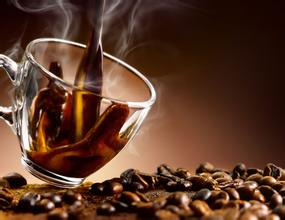Introduction to the description of taste and flavor of Salvadoran coffee
Salvadoran coffee accounts for 40 per cent of the country's exports and is picked in November and December and from January to March of the following year. Green bean exports continue almost throughout the year. Coffee is produced in seven of the country's 14 departments, with chalatenango and santa ana in the north-west the most abundant. El Salvador produces 100% Arabica coffee, 68% of which is bourbon, and bourbon coffee is usually grown at altitudes of 1062 - 1972 meters. El Salvador's unique mountainous river plateau terrain provides a suitable environment for the growth of Bourbon coffee. At the same time, El Salvador's suitable temperature and abundant rainfall and fertile soil are also indispensable natural conditions for breeding high-quality coffee beans. Salvadoran coffee is balanced, soft, and good in texture, just like other typical island beans.
Central American countries generally distinguish quality grades by altitude, such as Costa Rica, Guatemala, Mexico, Honduras and other countries. Similarly, El Salvador is classified according to altitude. At high altitudes, because of the cold climate and slow growth of coffee, the density of green beans will be higher, the hardness will be stronger, and the acid taste of Arabica will be better, and of course the quality will be better. Therefore, the higher the altitude of coffee growth, the higher the quality of flavor, on the contrary, the lower the altitude, the higher the temperature, the faster the growth rate of raw beans, the smaller the density, the lower the hardness, and the poorer the quality.
That's all for Salvatore's introduction, so let's go back to the original topic: What surprised me?
The first Salvadoran to drink was washed beans, medium-light baked, warm and gentle, smooth in taste, sour and sweet mellow, and did not have too prominent flavor characteristics, so it did not leave too much impression. But the sun-treated Salvadoran flavor becomes very recognizable and stunning. After grinding, the dry aroma volatilizes a pleasant tropical fruit aroma, which is then steamed, extracted and finished, with a continuous aroma of jackfruit. As soon as the extraction is over, I can't wait to drink a mouthful. Strawberry, brown sugar, faint spice flavor, and then drink two mouthfuls. The creamy and smooth taste can be described by an advertising phrase-"Silky at the moment" haha. This country is a small producer of coffee, suitable for honey treatment and sun. On the whole, honey and sun treatments also gave El Salvador a new soul. Rhyme lasting taste rich, sour moderate, chocolate rhyme, unique tropical fruit notes, people remember deeply

Important Notice :
前街咖啡 FrontStreet Coffee has moved to new addredd:
FrontStreet Coffee Address: 315,Donghua East Road,GuangZhou
Tel:020 38364473
- Prev

A particularly mellow civet coffee flavor description, grindability characteristics, introduction to the taste of varieties in producing areas
In the coffee industry, Kopi Luwak is widely regarded as a product with novelty as the selling point. The American Special Coffee Association (Specialty Coffee Association of America,SCAA) says the industry consensus is that it tastes bad. SCAA quoted a coffee expert as saying: obviously, the selling point of Kopi Luwak is its story, not its quality. Adopt SCAA
- Next

Introduction to the producing areas of Cuban Crystal Mountain Coffee by describing the characteristics of Grinding degree and Flavor
Cubita is produced in coffee from the pollution-free Crystal Mountain in the high altitude of Cuba, which is adjacent to the Blue Mountain Mountains of Jamaica and has similar climatic conditions, comparable to Jamaican Blue Mountain Coffee. Crystal Mountain is also known as the Blue Mountain of Cuba. So there are a lot of coffee under the banner of the Cuban Blue Mountains, but the purest Crystal Mountain Coffee Cubita is allowed to use Cuban water.
Related
- Detailed explanation of Jadeite planting Land in Panamanian Jadeite Manor introduction to the grading system of Jadeite competitive bidding, Red bid, Green bid and Rose Summer
- Story of Coffee planting in Brenka region of Costa Rica Stonehenge Manor anaerobic heavy honey treatment of flavor mouth
- What's on the barrel of Blue Mountain Coffee beans?
- Can American coffee also pull flowers? How to use hot American style to pull out a good-looking pattern?
- Can you make a cold extract with coffee beans? What is the right proportion for cold-extracted coffee formula?
- Indonesian PWN Gold Mandrine Coffee Origin Features Flavor How to Chong? Mandolin coffee is American.
- A brief introduction to the flavor characteristics of Brazilian yellow bourbon coffee beans
- What is the effect of different water quality on the flavor of cold-extracted coffee? What kind of water is best for brewing coffee?
- Why do you think of Rose Summer whenever you mention Panamanian coffee?
- Introduction to the characteristics of authentic blue mountain coffee bean producing areas? What is the CIB Coffee Authority in Jamaica?

